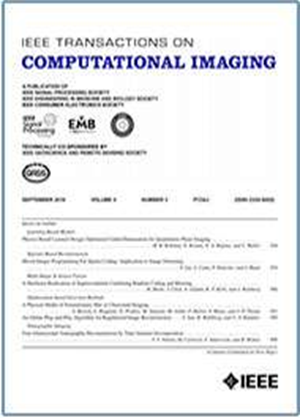PAH2T-Former:用于协同提高FMT重建质量和效率的配对注意混合分层变压器
IF 4.8
2区 计算机科学
Q2 ENGINEERING, ELECTRICAL & ELECTRONIC
引用次数: 0
摘要
荧光分子层析成像(FMT)是一种灵敏的光学成像技术,可以在分子和细胞水平上实现三维(3D)层析成像。然而,从表面二维(2D)荧光投影数据重建荧光目标的内部三维分布仍然是一项具有挑战性的任务。近年来,基于深度学习的FMT重建受到了广泛的关注,与传统方法相比,特别是与变压器相结合,表现出了优越的性能。与强调局部上下文的卷积架构不同,transformer利用自关注机制来捕获远程依赖关系,从而提高FMT重建的准确性。然而,自注意力的二次计算复杂度构成了一个瓶颈,特别是在三维FMT重建中。本文旨在提出一种新的基于变压器的FMT重建算法,该算法不仅具有高质量的重建精度,而且在效率和推理速度上保持优异的性能。关键设计包括引入一种新的空间-通道配对注意模块(SC-PAM),该模块采用基于空间和通道注意的一对相互依赖分支,从而有效地学习空间和通道域的判别特征,同时相对于输入投影大小具有线性复杂性。此外,为了方便空间分支和通道分支之间的数据传输,我们共享查询和键映射函数的权重,这在不提高复杂性的情况下提供了互补的成对关注。通过数值模拟和体内实验进行了广泛的评估,以验证所提出模型的有效性。结果表明,我们的PAH2T-Former方法在降低模型参数和复杂度的同时获得了最高的Dice。本文章由计算机程序翻译,如有差异,请以英文原文为准。
PAH2T-Former: Paired-Attention Hybrid Hierarchical Transformer for Synergistically Enhanced FMT Reconstruction Quality and Efficiency
Fluorescence molecular tomography (FMT) is a sensitive optical imaging technique that can achieve three-dimensional (3D) tomographic images at the molecular and cellular levels. However, reconstructing the internal 3D distribution of fluorescent targets from surface two-dimensional (2D) fluorescence projection data remains a challenging task. In recent years, deep learning-based FMT reconstruction has received considerable attention, demonstrating superior performance compared to conventional methods, particularly combined with Transformers. Unlike convolutional architectures that emphasize local context, Transformers leverage self-attention mechanisms to excel at capturing long-range dependencies, thereby enhancing FMT reconstruction accuracy. Nevertheless, the quadratic computational complexity of self-attention poses a bottleneck, particularly pertinent in 3D FMT reconstructions. This paper aims to propose a novel Transformer-based FMT reconstruction algorithm that not only delivers high-quality reconstruction accuracy but also maintains excellent performance in efficiency and inference speed. The key design involves introducing a novel Spatial-Channel Paired Attention Module (SC-PAM), which employs a pair of interdependent branches based on spatial and channel attention, thus effectively learn discriminative features in both spatial and channel domains, meanwhile exhibiting linear complexity relative to the input projection size. Furthermore, to facilitate data transmission between the spatial and channel branches, we share the weights of the query and key mapping functions, which provides a complementary paired attention without elevating complexity. Extensive evaluations through numerical simulations and in vivo experiments were performed to validate effectiveness of the proposed model. The results show that our PAH2T-Former method achieves the highest Dice while reducing model parameters and complexity.
求助全文
通过发布文献求助,成功后即可免费获取论文全文。
去求助
来源期刊

IEEE Transactions on Computational Imaging
Mathematics-Computational Mathematics
CiteScore
8.20
自引率
7.40%
发文量
59
期刊介绍:
The IEEE Transactions on Computational Imaging will publish articles where computation plays an integral role in the image formation process. Papers will cover all areas of computational imaging ranging from fundamental theoretical methods to the latest innovative computational imaging system designs. Topics of interest will include advanced algorithms and mathematical techniques, model-based data inversion, methods for image and signal recovery from sparse and incomplete data, techniques for non-traditional sensing of image data, methods for dynamic information acquisition and extraction from imaging sensors, software and hardware for efficient computation in imaging systems, and highly novel imaging system design.
 求助内容:
求助内容: 应助结果提醒方式:
应助结果提醒方式:


